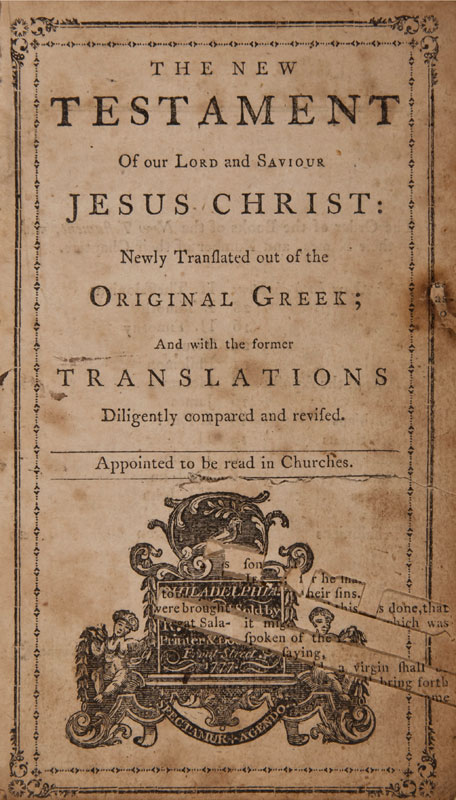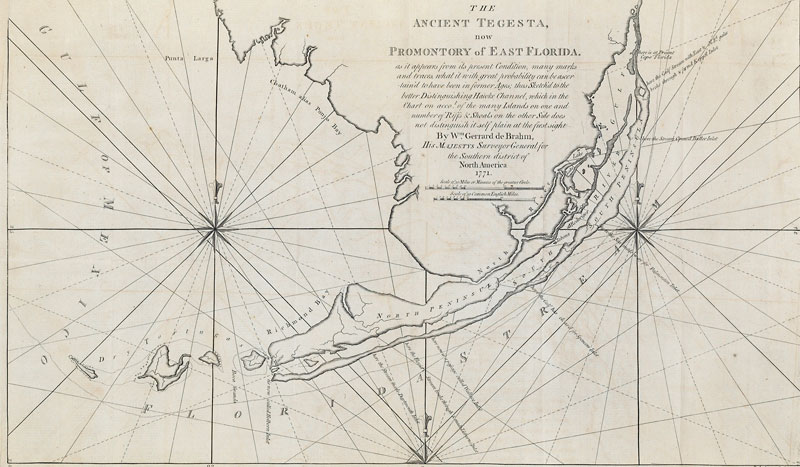 Ian McKay’s weekly column in Antiques Trade Gazette has been running for more than 30 years.
Ian McKay’s weekly column in Antiques Trade Gazette has been running for more than 30 years. A Moveable Feast for the Eyes
The Aitken New Testament—Mutilated Rarity
The Aitken New Testament, £128,100 ($198,555) at Bloomsbury Auctions of London on November 29.
This was the earliest edition of the English New Testament to be printed in America, and in publishing it in Philadelphia in 1777, the Scottish-born printer and engraver Robert Aitken broke the English crown’s monopoly of production of the King James Bible. The complete Bible followed in 1781-82, but despite approval from the newly instituted Congress, the venture was a financial failure.
One of those works usually dubbed a landmark or cultural cornerstone, this would also appear to be one of only three recorded copies—the other two being held in American institutional collections.
The auctioneers wondered whether they might hear of others when they announced the inclusion of this copy in their November sale, but nothing happened, and it is this absolute rarity that helped it overcome defects that in other circumstances might have proved detrimental.
The contemporary calf binding is creased, bumped, and rubbed, and the New Testament itself is browned and foxed throughout. It also lacks the front free endpaper and shows a few other defects, but what is most unfortunate is that someone decided to carefully remove virtually all traces of a perforated library stamp of the Philadelphia Divinity School that had been applied to the verso of the title, and in so doing cut slices from the publisher’s imprint!
Quite when this happened is not known, but photographs show the title page in un-mutilated form. The Philadelphia Divinity School was disbanded in 1974 and merged with the Episcopal Divinity School in Cambridge, Massachusetts, so it seems likely that this outrage was perpetrated in comparatively recent times. The EDS has in the past disposed of books from its collections, and this must have been one of them, as it was not they who consigned the Aitken New Testament to auction.
Charting the Gulf Stream
William Gerard de Brahm, Atlantic Pilot, $60,000 at Christie’s New York on November 15.
Published in London 1722 by Thomas Spilsbury, this work runs to just three engraved and folding maps—a hydrographical chart of the Atlantic and two others showing portions of the Florida coast—but it is of the utmost rarity.
The German-born de Brahm, once a captain of engineers in the armies of the Holy Roman Emperor Charles VI, served from 1765-71 as the surveyor general of the southern district of British North America and was a skilled mapmaker in the southeastern colonies.
This little pilot guide, based on observations made during an eighteen-week voyage along the Florida coast and in the Gulf of Mexico, and on a subsequent passage to England, is a pioneering attempt to examine the course and rate of flow of the Gulf Stream. At around the same time, Benjamin Franklin had ordered all known data to be engraved on a commonly used chart of the Atlantic, but as only later copies of 1786-89 are recorded, de Brahm’s pilot guide takes precedence.
De Brahm’s studies produced more information than is contained in this work; one unpublished manuscript at Harvard is in effect a continuation and extension of the Atlantic Pilot and includes two additional charts.
Only three copies have sold at auction in over fifty years, all of them at Christie’s in New York. In 1991, the copy in the Pierre S. duPont III library made $8,800, but in 2007 the Frank S. Streeter sale saw a copy reach $78,000.









